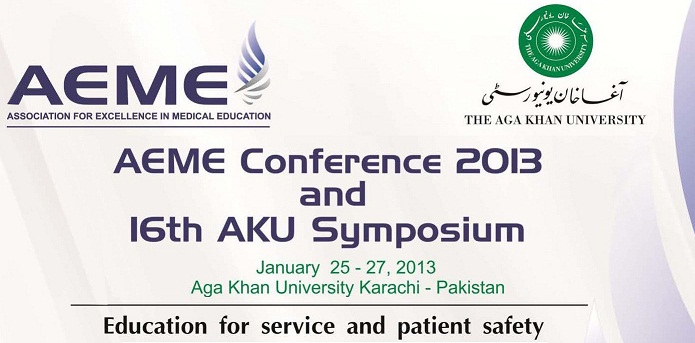Day 1 : Poster Presentations (Theme: Patient Safety)
Early laparoscopic cholecystectomy for acute calculous cholecystitis: what is the optimal timing?
Location
Auditorium Pond Side
Start Date
26-1-2013 10:30 AM
Abstract
Objective: To assess the outcome of optimal timing of early laparoscopic cholecystectomy in cases of acute calculous cholecystitis.
Material and methods: This is a descriptive case series conducted in Shaukat Omer Memorial (Fauji Foundation) Hospital and Hill-Park General Hospital Karachi, from April 2010 to November 2011. Clinical records of 164 patients who underwent early laparoscopic cholecystectomy in acute calculous cholecystitis were retrieved and categorized into two groups according to the timing of surgery from the onset of symptoms (A, who had laparoscopic cholecystectomy within 72 hours; B, who had laparoscopic cholecystectomy after 72 hours). Primary Outcomes were conversion to open procedure, postoperative complications and length of hospital stay. The SPSS version 11 was utilized for data analyses. Chi-square test was used to assess qualitative and unpaired Student t test was employed for quantitative data. A value of p < 0.05 was considered statistically significant.
Results: A total of 164 patients were taken with the mean (+SD) age was 40.42 +12.42 year. There were 143 (87.2%) females with male to female ratio being 1:6.8. Comparing the two groups, the conversion rates (2.9% versus 13.6%, p=0.012), postoperative complications (1.9% versus 10.2%, p=0.026), and length of hospital stay (2.34 versus 3.93 days, p<0.001) were significantly reduced in group A.
Conclusion: The early laparoscopic cholecystectomy within 72 hours minimizes the conversion rates and postoperative complications, and shortens the length of hospital stay in cases of acute calculous cholecystitis.
Early laparoscopic cholecystectomy for acute calculous cholecystitis: what is the optimal timing?
Auditorium Pond Side
Objective: To assess the outcome of optimal timing of early laparoscopic cholecystectomy in cases of acute calculous cholecystitis.
Material and methods: This is a descriptive case series conducted in Shaukat Omer Memorial (Fauji Foundation) Hospital and Hill-Park General Hospital Karachi, from April 2010 to November 2011. Clinical records of 164 patients who underwent early laparoscopic cholecystectomy in acute calculous cholecystitis were retrieved and categorized into two groups according to the timing of surgery from the onset of symptoms (A, who had laparoscopic cholecystectomy within 72 hours; B, who had laparoscopic cholecystectomy after 72 hours). Primary Outcomes were conversion to open procedure, postoperative complications and length of hospital stay. The SPSS version 11 was utilized for data analyses. Chi-square test was used to assess qualitative and unpaired Student t test was employed for quantitative data. A value of p < 0.05 was considered statistically significant.
Results: A total of 164 patients were taken with the mean (+SD) age was 40.42 +12.42 year. There were 143 (87.2%) females with male to female ratio being 1:6.8. Comparing the two groups, the conversion rates (2.9% versus 13.6%, p=0.012), postoperative complications (1.9% versus 10.2%, p=0.026), and length of hospital stay (2.34 versus 3.93 days, p<0.001) were significantly reduced in group A.
Conclusion: The early laparoscopic cholecystectomy within 72 hours minimizes the conversion rates and postoperative complications, and shortens the length of hospital stay in cases of acute calculous cholecystitis.

